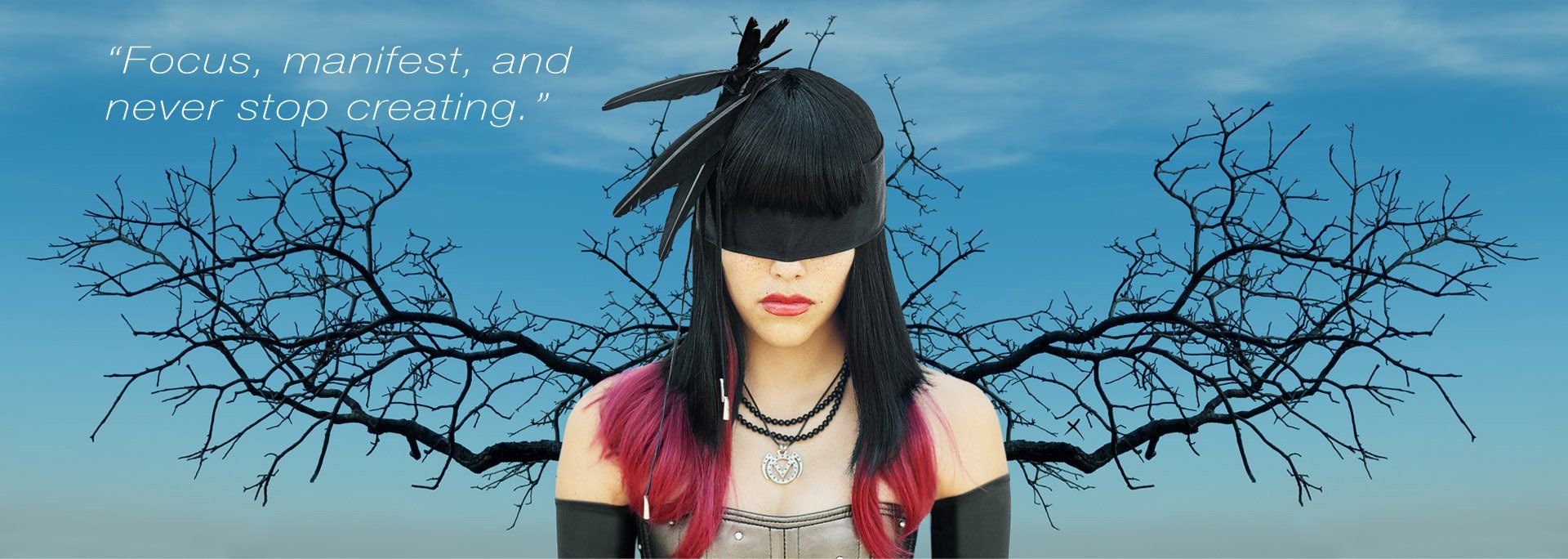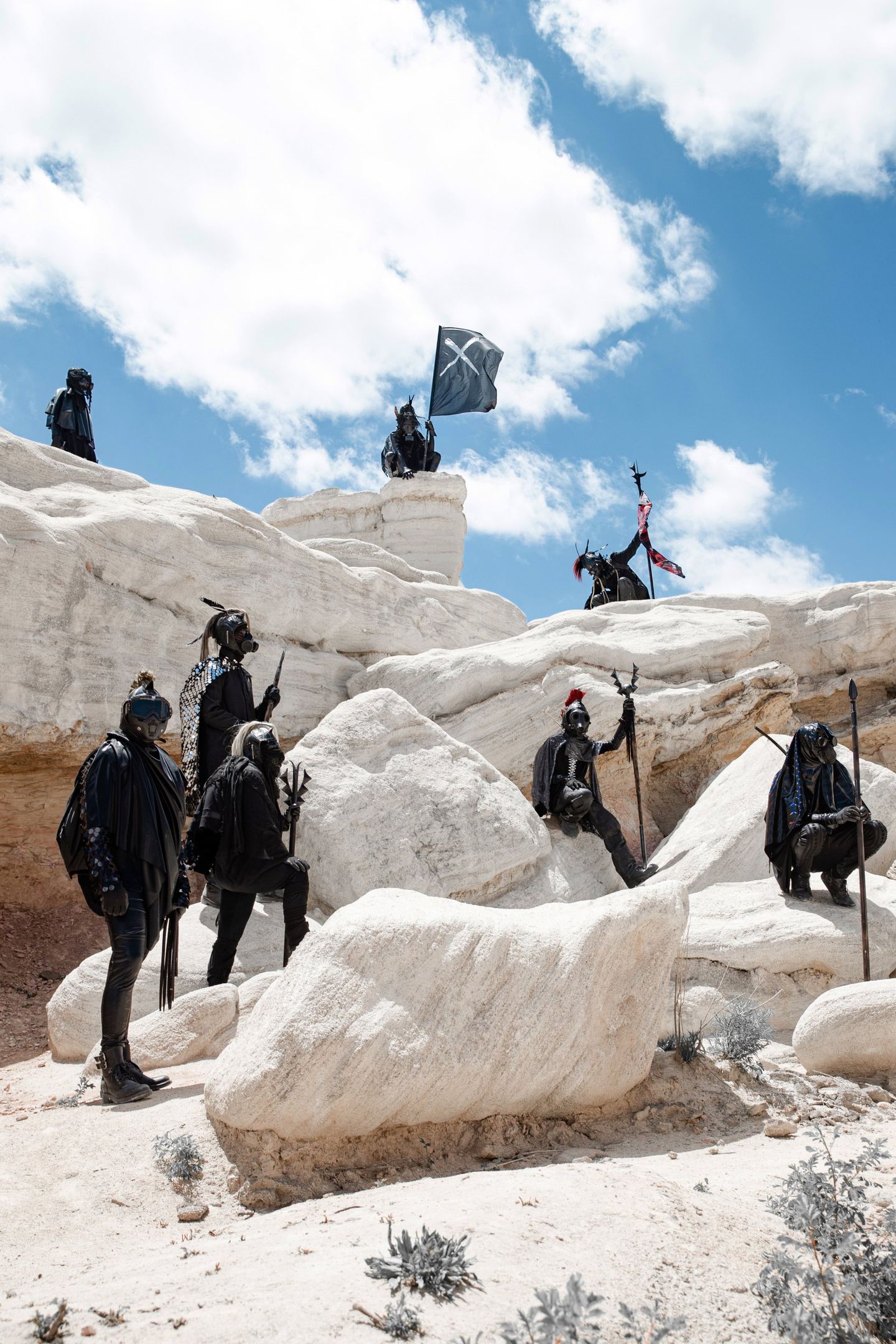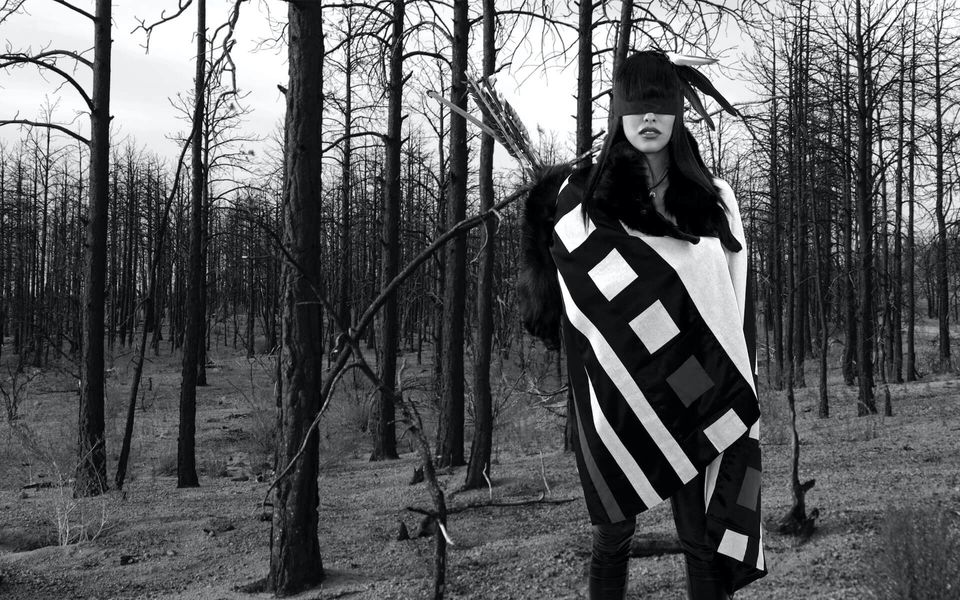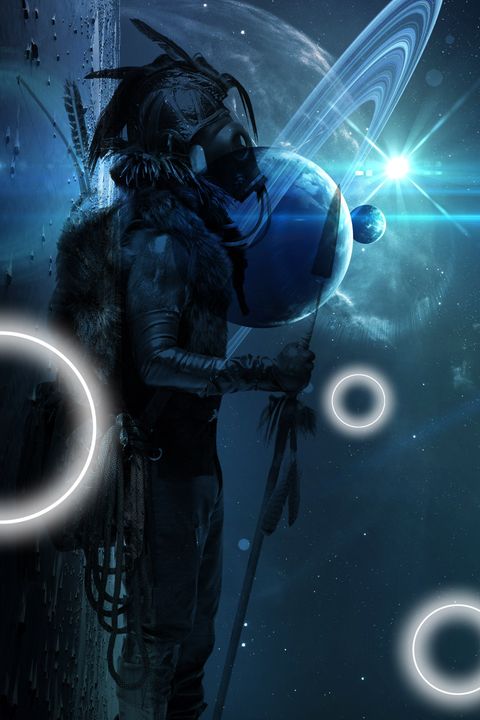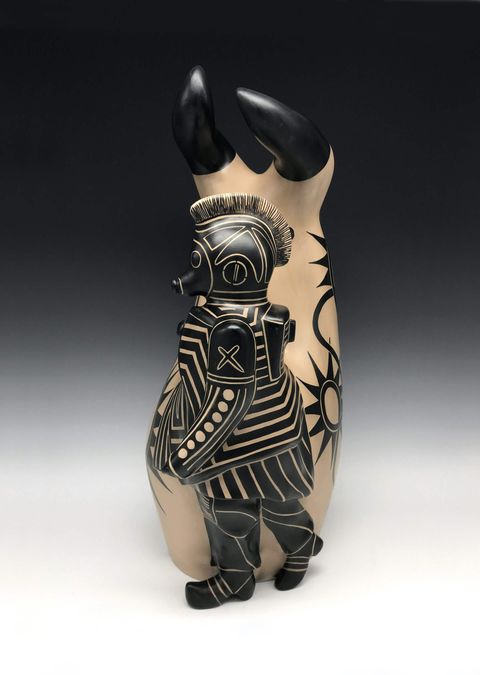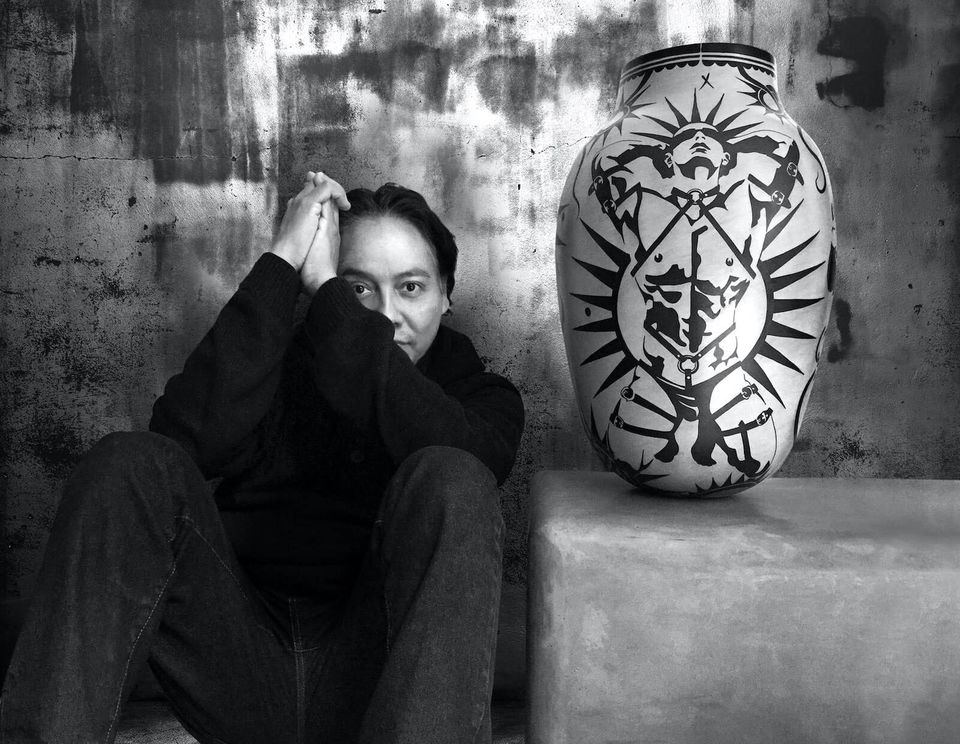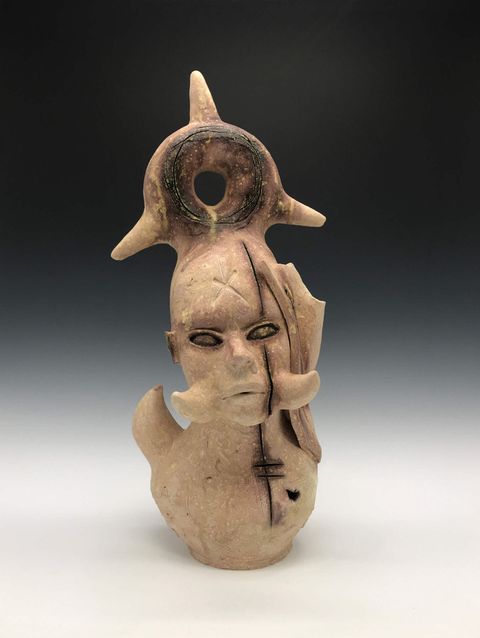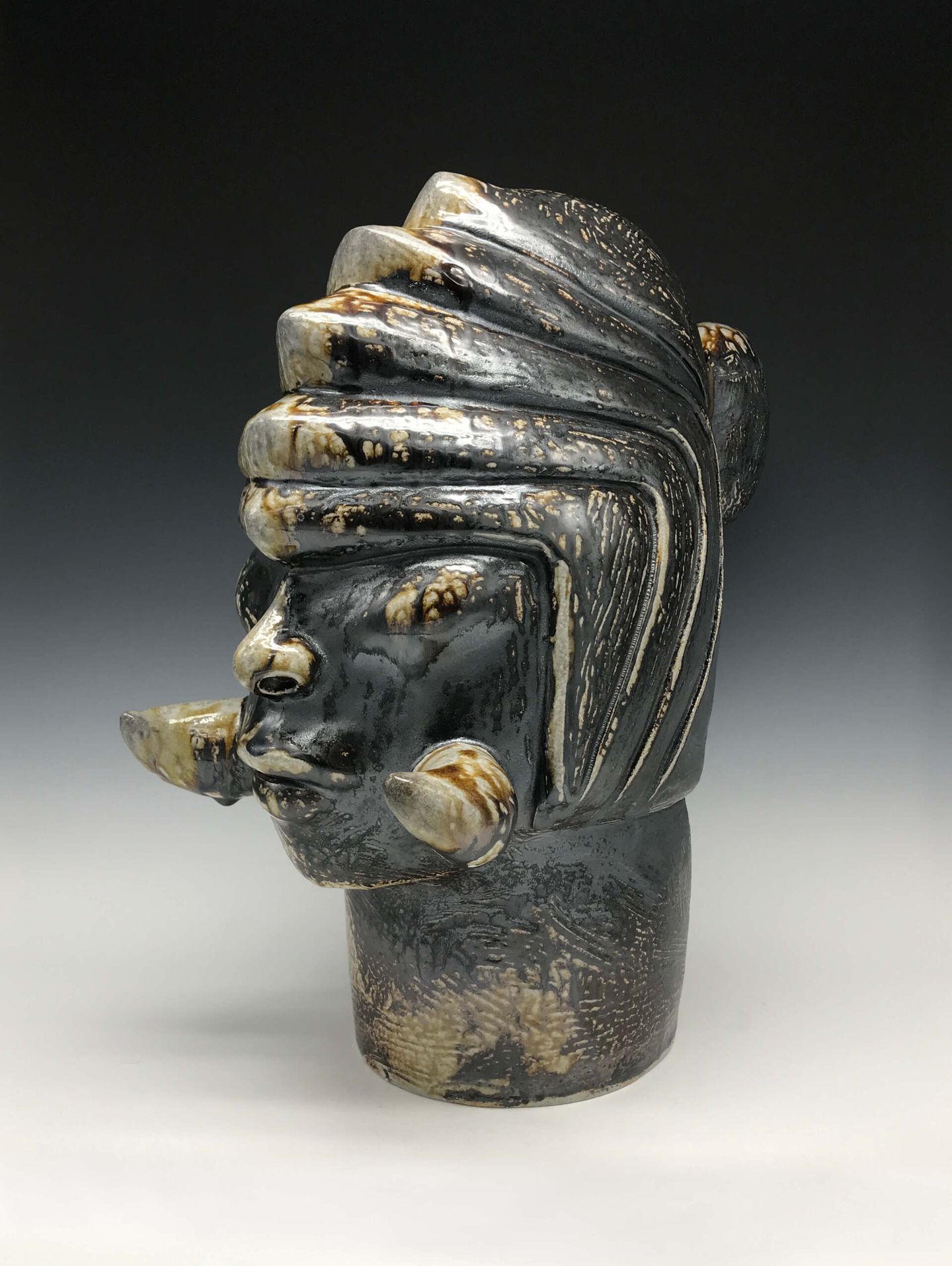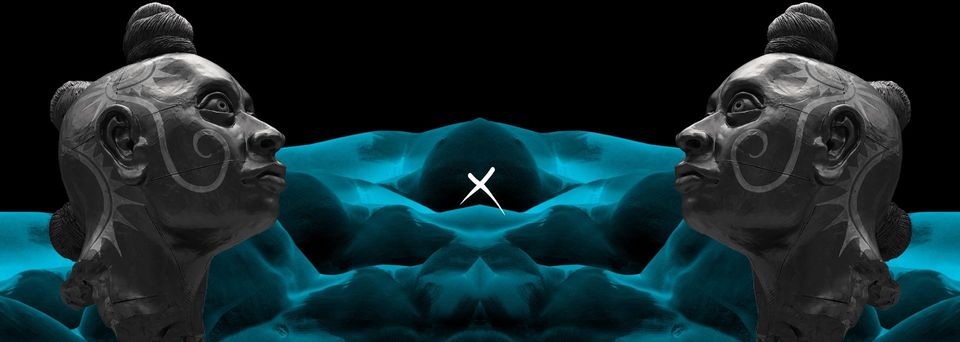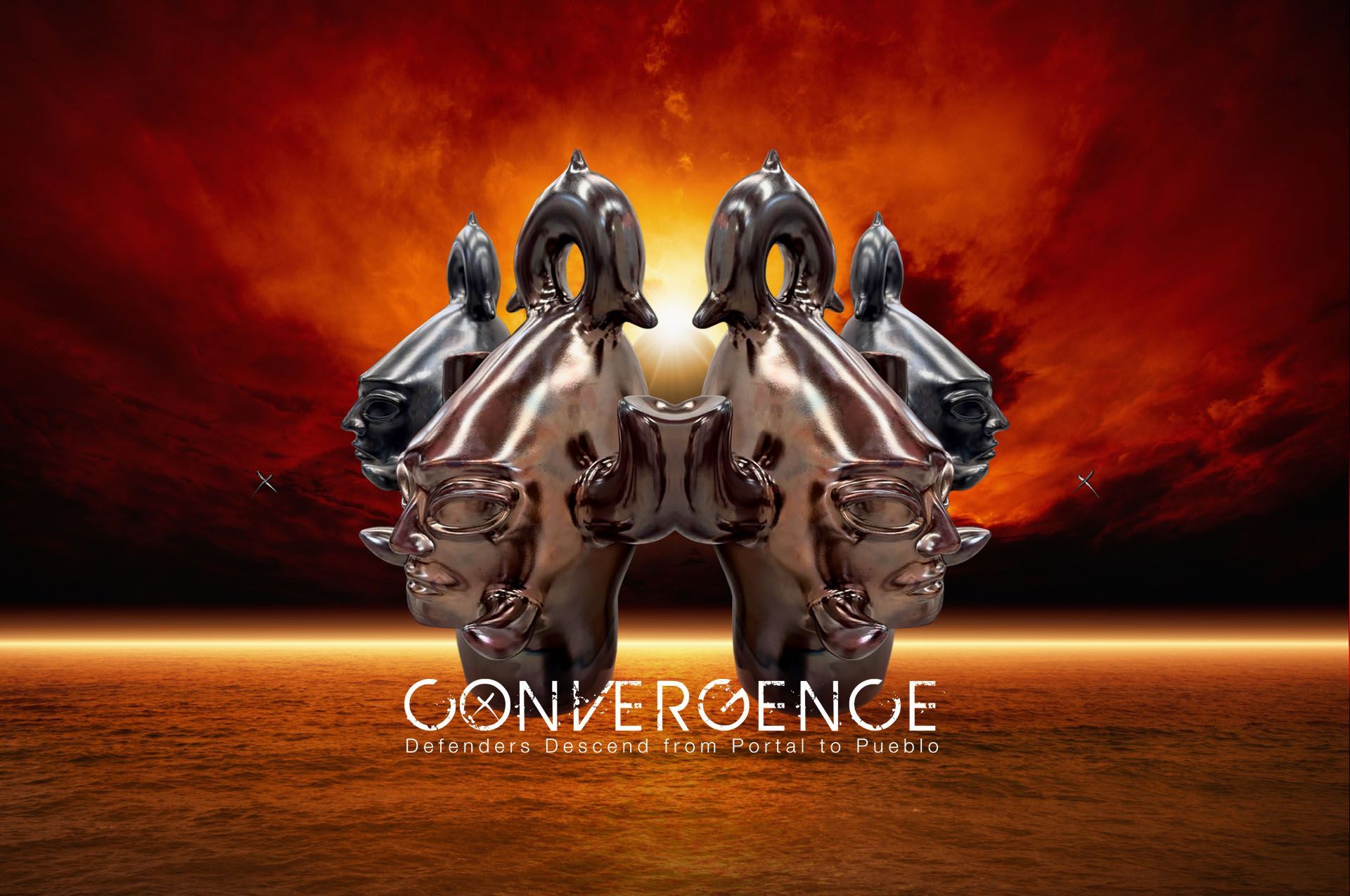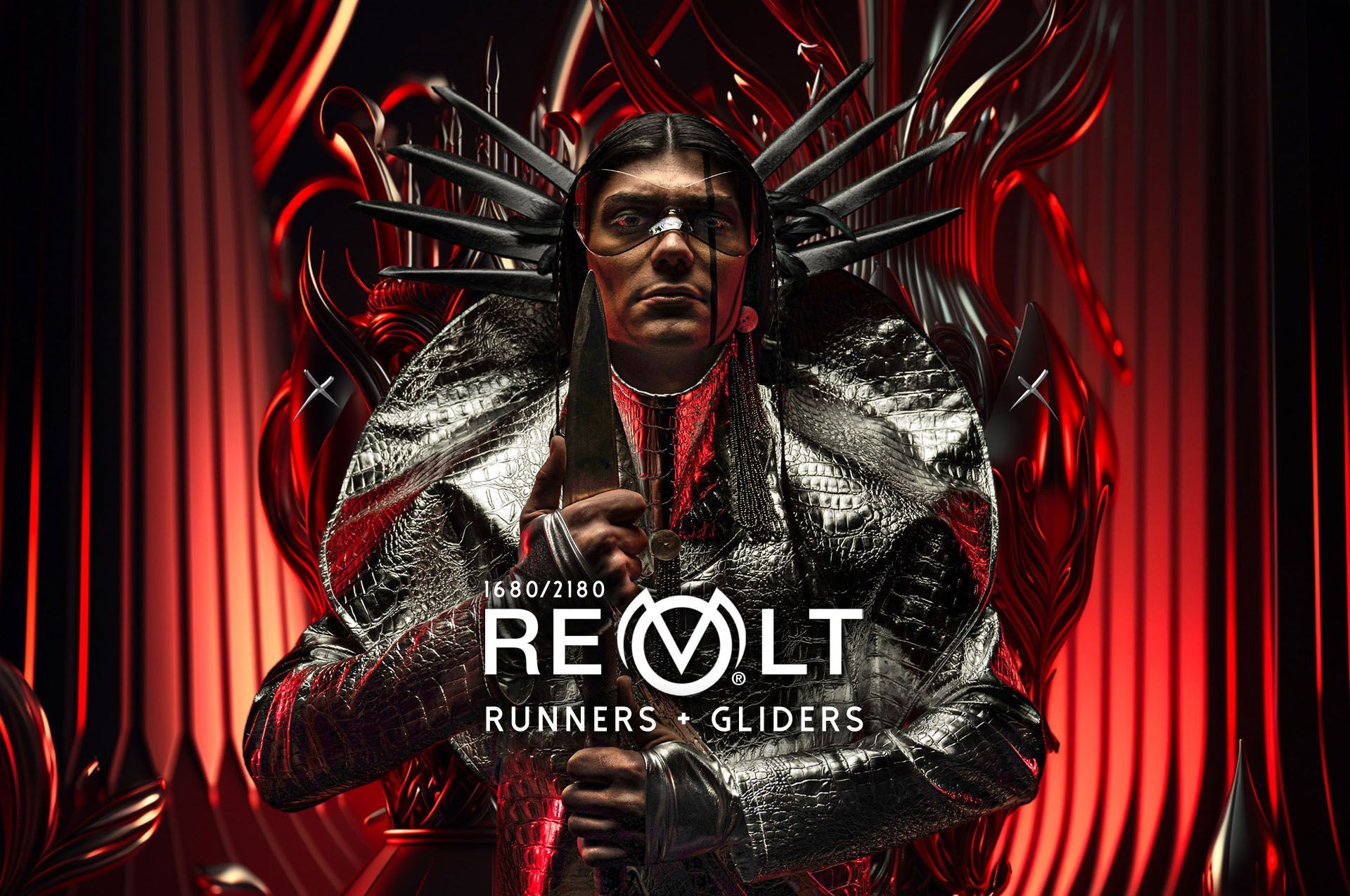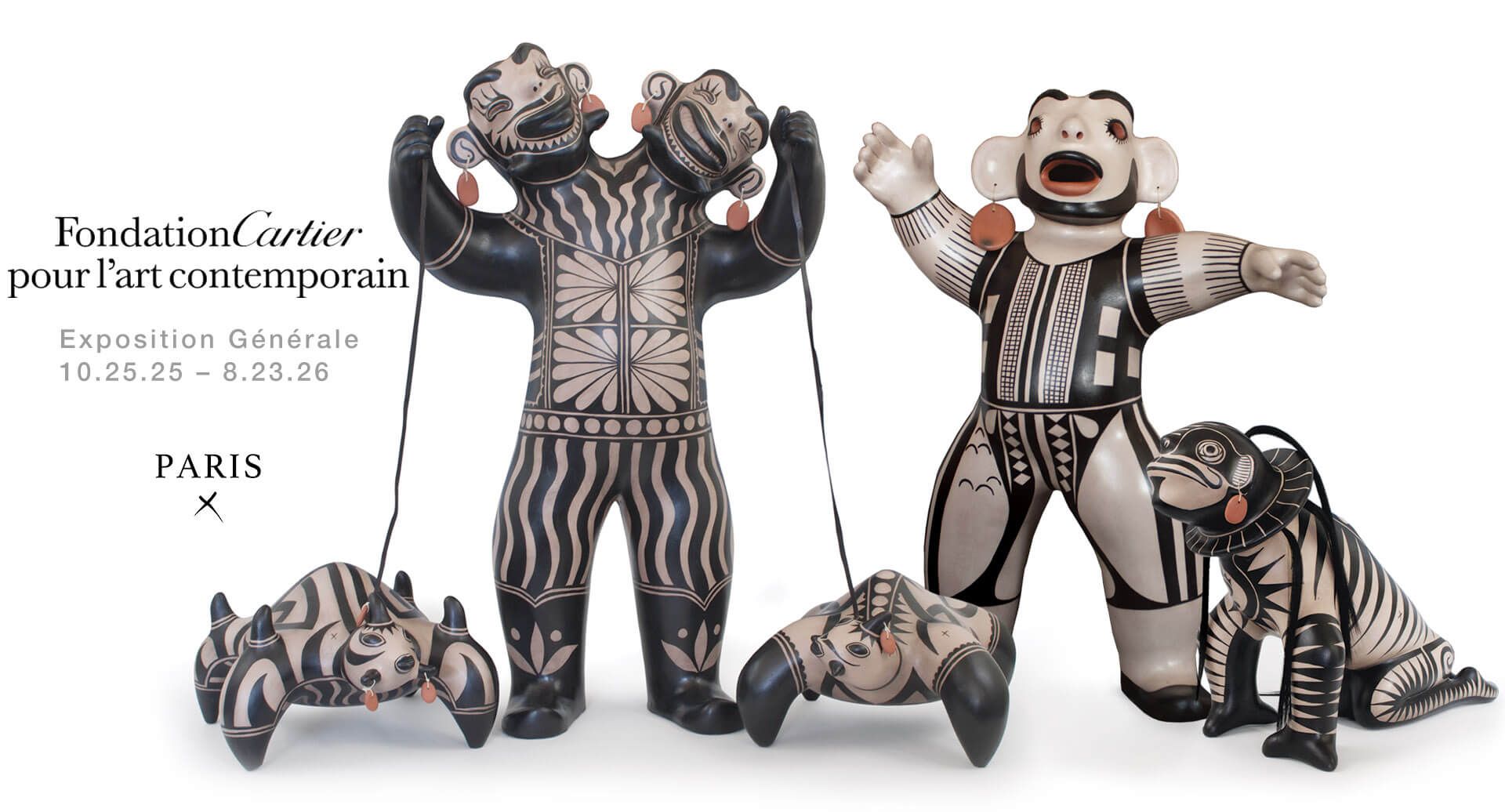The pandemic prompted a major stylistic shift in Ortiz’s work, forcing him to add to his repertoire. In February, Ortiz was teaching at Arizona State University (ASU), working with a small group of senior ceramics students when the COVID-19 pandemic shut down the studios. The students’ plans dramatically changed, and Ortiz, originally scheduled to teach for the entire semester, found himself with time on his hands. A friend connected Ortiz to the owners of the Reitz Ranch Center for Ceramic Arts, Sheryl Leigh-Davault and her husband Ted Davault. Ortiz and one of the ASU seniors, Andrew “Augusta” Smith, drove the two hours from Tempe to Reitz Ranch for residencies from March through June. In a matter of days, Smith rewrote his senior thesis to use the ranch’s resources in collaboration with Ortiz, which he presented to his main ceramics teacher.
Ortiz explains, “The professor said, ‘Yeah, that sounds good. You can do it if you can pull it off.’ So he was able to, and we just got an Airbnb close to Reitz Ranch and created a whole body of work, and he passed with flying colors. It worked out for both of us.” While at the ranch, Ortiz also collaborated with two other ceramic artists, Heidi Kreitchet and Grayson Fair. “It has been an awesome ride to learn different techniques working with contemporary, high-fire clay,” says Ortiz. “The developments in my work are significant, from size to texture to atmospheric firings.... This experience has been a blessing: traveling for artist residencies, teaching, and meeting other clay creators. Working with Heidi, Augusta, and Grayson has been the best part of it all. The collaborations feel like we have been working together for ages, yet it has been just under a year. I’ve met students that inspire me and hopefully I have taught them something as well. I cannot wait to see what develops from more collaborations.”


